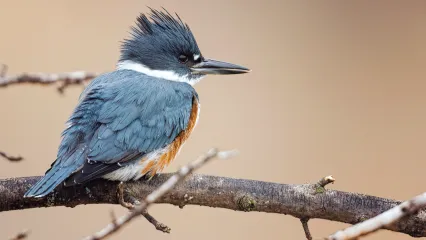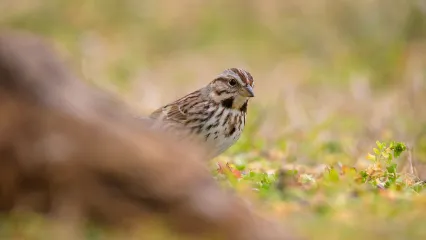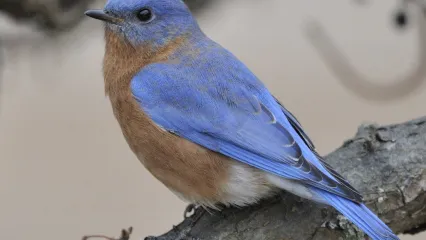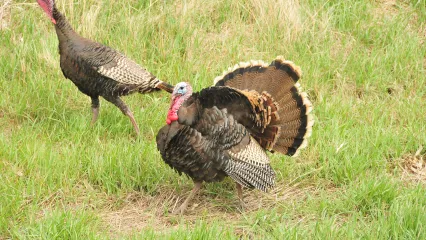
Description
The belted kingfisher (Megaceryie alcyon) is easy for new birders to learn thanks to their distinct body shape and call. Belted kingfishers have a stout body with a large head and a distinct crest. Their bill is long, straight, thick and pointed. They are a medium sized bird with a squared off tail. The female belted kingfishers are more brightly colored than the males, which is somewhat of an unusual trait to find in birds. They are a blue-gray color on their backs with white spots on their wings. Their underside is white with a wide blue-gray chest band. Females also have a reddish brown chest band.
The belted kingfisher looks for food by perching on trees or piers and overlooking water or by hovering over the water and then diving into it. Their food of choice is fish, with favorites including sticklesbacks, mummichogs, trout and stonerollers. They will also eat crayfish and other crustaceans, mollusks, insects, amphibians, reptiles, young birds, small mammals and some berries.
The belted kingfisher is part of the family Alcedindae in the order Coraciformes. There are 91 species in 17 different genera worldwide. They are found throughout the world with the exception of polar regions and some isolated islands. The largest number of species is found in the Australasian region. There are six species found in the new world. Of those six species there are three found in the United States. The belted kingfisher is the most widespread in the United States.
Take a few minutes to find the call of a belted kingfisher so the next time you are on the water you can find one and impress your company
Size
They are 11 to 14 inches in length.
Habitat
They are found along streams, rivers, ponds, lakes and estuaries; they prefer water that has minimal amounts of vegetation. The species is made up of migrating and nonmigrating individuals. During the breeding months, individuals spend time in the far northern United States and Canada. They also spend time in the far southern states and Mexico and Central America. Year round populations can be found throughout the United States. They winter in places where the water doesn't freeze so they can still have access to their aquatic food sources.
Life Cycle
Throughout the year, they are solitary animals, except during breeding season when they stay in pairs. Belted kingfishers are monogamous during the breeding season but select a new mate every year. During the selection process of finding a mate, the males will bring the females food. Both the males 48 and females will defend their territory during the breeding season. They nest in burrows in the banks of bodies of water, and both the male and female take turns constructing the burrow. Females will lay one or two broods of eggs during the breeding season, which can contain 5-8 eggs. The incubation period of the eggs is 22-24 days, and the nestlings will remain in the nest 27-29 days. An interesting fact about belted kingfishers is that, as nestlings, they have acidic stomachs, allowing them to digest bones, scales and shells. But by the time they fledge from the nest, the acidity of their stomachs has changed and they regurgitate pellets instead of being able to digest the bones, scales and shells.


